The days of sleeping with our doors unlocked are long gone. Humanity has changed. It’s become more brazen, and as such, we need to do what we can to ensure that our families are safe while home.
The same can be said for protecting investments such as trailers, boats, and sheds full of tools that we likely have to leave outside. One of the most practical ways of doing so is to ensure that you have high-quality locks on all of your doors and outside gear that need to be chained down.
As a locksmith, I’ve learned that not all locks are created equal. I’ve replaced a lot of locks and picked a lot of doors open, and I’ve come to the conclusion that some people are going about their daily lives with virtually no means of hardware security whatsoever.
The field of locks is a complicated and sometimes mysterious subject though, and it can be incredibly confusing to attempt to pick through all of the rubbish to find the golden nuggets.
So I’ve attempted to do that for you below. If you are somebody who takes security seriously, here are the five locks that you want to avoid at all costs:
1. Old Kwikset Entry Locks
My absolute favorite lockout call to get is for a residence that has one of these on its doors.
While I’ve spent a good portion of time lockpicking in my field, I am by no means anywhere near as proficient at it as Bosnian Bill or the Lock Picking Lawyer on Youtube. Maybe someday I’ll be, but at the moment that’s a distant dream.
As such, I really like getting access to doors that I can pick open pretty easily. It makes my job much more enjoyable and considering the fact that people like to lock themselves out of their homes right as I’m about to clock out, in the freezing cold, or when it’s raining, the quicker I can gain entry, the better.
When I walk up to a house with an older Kwikset entry lock on it, I know with a fair degree of certainty that I can be inside that house in all ten minutes.
It’s wonderful. I make more money because I charge by the job and the job gets done quicker (leaving me more time for the next).
2. First Generation Kwikset SmartKey
While I’ve never met anybody who could pick open a Smartkey lock, the fact of the matter is that with the first generation there really wasn’t any need to.
All you needed to gain access to these doors was a flathead screwdriver.
If you wedge it into the gap between the lock cylinder and the housing body you can literally just pry the lock right out of there. It’s a destructive means of entry that will leave the lock with a big dent in one of the sides of it, but it’s incredibly fast.
You can’t do that with the newer generation SmartKey products, but I’m still just not a huge fan of Kwikset.
Related: How to Build a Secret Bookcase Door
3. Anything Old, Rusted, or Beat to Pieces
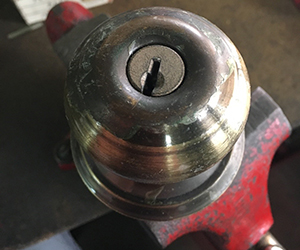 If your lock looks like it’s seen better days, then you need to replace it pronto.
If your lock looks like it’s seen better days, then you need to replace it pronto.
Not only does this mean that I could likely pick my way into your house relatively easily (the inner pins are likely worn down to nubs), but it also means that your lock is going to break at the worst possible moment.
This happens in two different ways.
First, something in the inner workings of your lock is likely to either break or freeze up, rendering your lock inoperable. The only way to get into your house through that door then is going to be with a drill. If you need to quickly get somebody to the hospital when this happens then you’re furthering a bad day.
The second way in which this can break is due to the extra difficulty that will take place with turning your key over. It’s only a matter of time with these types of stiff locks before your key breaks off in the inside of the keyway, once more rendering your lock inoperable.
You’re not going to have the tools that you need to get that little broken piece of metal out of there either.
4. Master Pad Locks
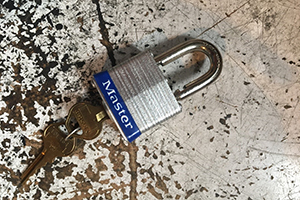 Some Master padlocks are better than others, and I myself do use the ones with the rubberized coating around them.
Some Master padlocks are better than others, and I myself do use the ones with the rubberized coating around them.
However, I avoid using the layered metal ones as much as I can. They’re just too easy to pick. I can typically beat them with a simple scrubbing attack, and apparently, a lot of other people can as well.
The majority of all break-ins are due to forced entry, NOT because somebody picked your lock. This means somebody’s more likely to kick through your door or go through an open window than they are to actually own a set of picks and use it to fiddle with your front door for a set amount of time.
However, padlocks of any kind seem to be the exception to that. I routinely end up with customers coming in to buy higher security padlocks because they’re discovering their stuff being messed with.
Most of the time this is for some form of outside purpose. It may be a storage trailer, a shed, a gate, or just about any other purpose that you can think of for using an outside padlock.
My theory on this is that curious, ill-meaning teenagers with a lot of extra time on their hands somehow get their hands on a set of picks and then go about looking for opportunities to use them.
If you have an old shed that’s right on the edge of the woods by the local high school, it may just be too much temptation to pass up.
Related: Six Primitive Traps For Catching Game In The Woods
5. Anything with a Tubular Key
These things are notoriously easy to pick open, often with nothing more than a cheap Bic pen.
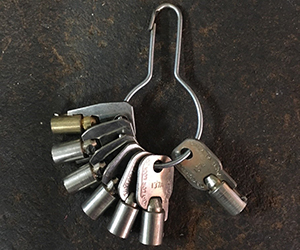
What’s funny though is that you’ll find these types of locks used on all kinds of things that really should be kept under a very secure form of storage.
For example, landlords keep copies of all of their tenant keys in a box on the wall with this kind of lock on it.
To me, that seems like something of a liability.
If anybody gains access to that office and knows their way around a tubular key they could easily have that box picked open in all of five minutes. Imagine what that person could then do with those keys, and you’ll see why I think tubular keys need to go the way of the dodo bird.
What I Recommend Instead
-
American Lock Pad Locks
I’ve yet to be able to pick one of these things open, and I’ve spent a heck of a lot of time attempting.

These are much more affordable than most of the Assa Abloy padlocks that you’ll see on the market as well.
When customers come into the shop looking for a higher security padlock because they’ve been having issues with the cheaper quality stuff they’ve been getting at their local hardware store, American Lock padlocks are what I sell them.
-
Schlage or Yale Door Locks
While there are higher security options out there, I think that for the average user both Schlage and Yale door locks provide a sufficient level of security. Schlage can be found at just about any hardware store out there, and they are significantly harder to pick than Kwikset gear.
Most of the time this is due to mushroom pins and tighter pin tolerances. That being said, Schlage is still considered an easy lock by most experienced lock pickers.
Yale is not as common of a keyway for residential locks, and so it’s going to be unlikely that a bad guy will have a bump key set for a Yale keyway. They’re harder to pick than Kwikset as well in my experience.
However, you’re likely going to have to visit a locksmith to pick up Yale products. I’ve yet to see them for sale at any hardware stores.
Related: 23 Prepping Items that You Can Find at the Dollar Store
-
What about Medeco?
While yes, these are incredibly secure keyways that are virtually unpickable, I don’t recommend them for the average client. To begin with, they’re prohibitively expensive – we’re talking somewhere around $200-300 per door.
That’s insane. If you need extra keys made you’re going to have to visit a locksmith with the appropriate gear to cut you another blank as well, and these can cost you $30/key.
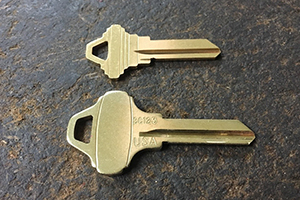
I view them as incredibly expensive ways to secure a door from an attack that is unlikely to happen compared to other attacks.
Picking is still something I want my home secured against, but I’ve provided layers of protection to my doors so that even if the lock is picked, nobody is going to be getting inside.
The bottom line is that there are most certainly higher security locksets available out there, but I don’t think they warrant the increased price.
If you really have your heart set on some type of high-security lockset, then I would look into Schlage Primus. They’ll be more cost-effective, and offer a greater amount of protection against picking and bumping than a lot of other options out there.
Again though, you’re going to have to go to a locksmith to pick this one up.
Final Thoughts
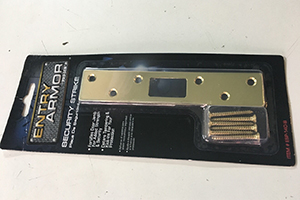
All of the above being said, I think that if you’re really concerned about door security choosing the proper lock is really only the first step.
If you don’t have a deadbolt installed on your door in addition to a key-in-knob, then you need to add one as soon as possible.
Your door can easily be kicked open or likely swiped via credit card.
I highly recommend some type of night latch and a security strike as well.
These make kicking in your door exponentially harder, and I’ve witnessed a lot of videos proving that the addition of such can make your door almost impossible to break-in, even with a police battering ram.
By adding these to your doors in addition to avoiding the above locks you’ll have a much more effective means of protection and security.
Are there other locks that you think should be avoided at all costs that I didn’t cover within this piece? Do you have any past experience with shoddy locks? Let us know in the comments below.
You may also like:
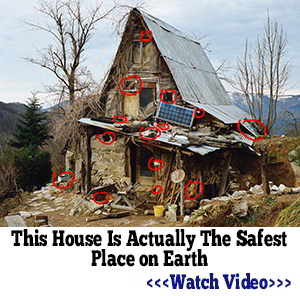 A Simple Way to Block Your Cellphone from Being Spied On
A Simple Way to Block Your Cellphone from Being Spied On
75 Items Worth More Than Gold in A Crisis (Video)
11 Survival Tricks Learned from Homeless People

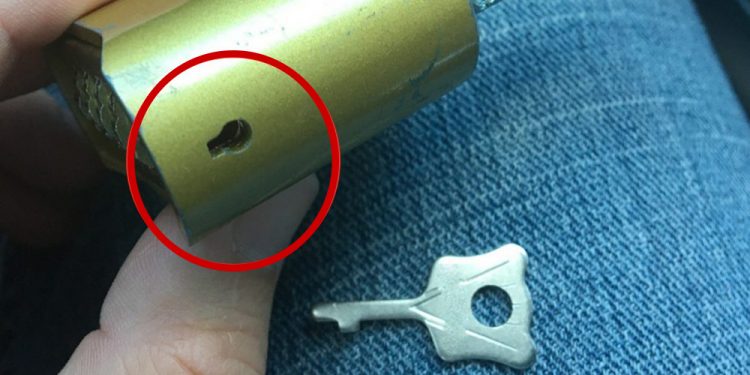













interesting about American Locks – didn’t know that they had a high rating with the pros …
Used to be manufactured “down the road” before they took off for cheaper labor – plenty of American locks on the local used market from their past dominance locally >> something to keep in mind and target for a security upgrade ….
The American locks if you have a change of personnel the tumblers can be changed out easily. You can buy keyed tumbler sets so you can have two or three
locks with the same key.
Some time you can find the lock keyed alike. Look on the boxes with the same number on it.
I have ordered as much as ten locks at a time for a trucking company so the drivers can lock cargo trailers and the doors on straight trucks.
Required for hazardous material and TSA. security in airports and seaports.
Big round wheel faced combination locks also should be avoided.
Just messing around as a kid years ago, I could pop the face off and open with just a flat head screwdriver in less than a minute.
What about kepad locks that use a code to open? how safe are they
The battery goes dead and you’re screwed, AVOID!
They have a key back up.
As long as any combination lock is mechanized, there should be no problem. Don’t buy any electronic locks, they are not encrypted, so easy to figure out the code. Mechanized locks need a special tool to get the face plate off that most criminals don’t have access to. No lock is secure, just secure in different degrees. The thing most don’t consider is to strengthen the door frame, use a metal frame & strong door or you will need a door reinforcement kit, Amazon has them, but only one is any good and meets any budget. The best on YouTube for lock information is Deviant Ollam coupled with thelockpickinglawyer, an unbeatable team.
American locks are all that the Army uses. If you lose the key to it, they just cut it off with bolt cutters, but it’s still a pain.
Bob, Here in the big city the frames of heavy steel storm doors are secured with thick rebar like rods drilled, then welded onto the frame around the door on all sides. Then it is all neatly covered over with cement. Battle ready is I say so!
If you want to know more about the vulnerability of almost all padlock and locking systems go to youtube and look up Lockpickinglawyer channel and find videos of how to pick the locks that you own. You will be amazed at how easy it can be and how vulnerable you are to the educated thieves out there.
I was going to post the same info. If you think any of your locks are good then check his channel.
Speaking on the topic of entry lock sets and reinforced doors. The door is only as secure as the frame around it. Here’s a true story. I’m a fireman and we were called to a house fire one evening. The house was locked up tight. The owner got there about the time we did. We removed a secondary vehicle to gain access to the home and avoid damaging the vehicle. Home owner in her frantic couldn’t find her keys so I told her I had to kick in the door. As I was making my way to the door she was trying to tell me that the door couldn’t be kicked in. I kicked it twice and was inside. After extinguishing the fire, still in shock, she came to me. She had just paid 3500 bucks for the security door that I gained access with only two kicks.
D/R
Do not be fooled into thinking picking a lock is easy or quick based on the “Lockpicking Lawyer” videos. Hand picking locks requires lots and lots of practice and a very light touch and tactile feel. Yes, he can pick most common locks in seconds with a normal set of picks. Buy yourself a common set of picks from Southord or other site. Try picking a few locks on your own house or buy a new cheap padlock and give a whirl. Let us all know how that turned out. As someone who has dabbled in that area more than most over the years, and have several hundred locks around to play with as i pick them up from yard sales, junk drawers, etc, i can tell you that it’s not NEAR as EASY as he makes it look. HOWEVER, this is a very good article that covers some of the key areas of door security. Personally, i have 2 metal doors, with metal frames, equipped with Schlage commercial 6 pin cylinders and deadbolts, keyed alike. Deadbolts have tool steel hardened pins in the middle of the bolt. This will stop the novice lockpicker or a guy with a screwdriver or small prybar. Door can’t be kicked in because they’re commercial building doors that open OUT. Yes, that means the hinges are on the outside, but you cant drive the pins out because there are set screws installed into deep grooves into the pin and a welded-on lower button the restricts the side of pin driving tool down to less than an 1/8″ diameter. Also, even if someone can remove the pins, the hinge plates themselves have a pair of upsets in them that makes prying the door out of the frame at the hinge end very difficult. With a good SAWSALL, a small stack of blades and a couple big prybars it can be gotten into. OR a $300-500 electric pick gun. But what i have is good decent security and looks as good as new after 15+ years as it’s all stainless. Isn’t your home security worth at least a couple hundred dollars per door? I mean Really, isn’t it?
Good article. I would add to always buy double sided deadbolts, and don’t leave the key in the interior lock side.
While I agree with most of what you have said, some points need to be addressed.
American Padlocks are good and pick resistant. However, locks made up until about 1990 are easily bypassed with a home made tool. Also, the tubular locks you mentioned have been upgraded and are harder to bypass than the first generation locks. Schlage and Yale locks are both available at DIY stores such as Lowes and Home Depot but they are usually Grade 3 locks. I have found both of these locks easy to pick or bypass. Agreed that they are not as easy as Kwikset, but still easy.
I noticed a question above about keypad home locks. Keep in mind that even these locks usually have a key bypass that can be picked.
I have been a Certified Master Locksmith for over 40 years. Now retired.
Here in the big city, I replaced my exterior locks with Multi Locks. They are easy to spot from the street as the key hole is sideways rather than straight up and down. As I understand from “friends in the hood” these are the only locks that can’t be “bumped”. Bumping locks while folks are away s good business in the hood. The key can’t be duplicated without a key card. The locks are expensive, but as I walk down my block, I take note to who has who doesn’t have the lock. It translates to who’s game and who’s not. Cops have told me that there is no way they can come in through the door in an emergency with these locks. My locksmith who installed the locks, has told me that he can’t unlock it if I lock myself out unless I have the key card. That’s all ok by me as I have contingency plans in that event.
Shaun, Here, I have what are called from a security standpoint, “man trap”s on both my front and back entrances. They are used mostly in banks and big department stores where you need to pass through a series of multiple entrance doors usually two before you are actually inside. It’s also a popular architectural design in colder climates. As a second lock set on these doors, I have key inside locks. I keep keys in the locks except when I leave the house. It offers a second layer of protection if you do answer the door and are faced with an unanticipated problem. The down side is, you have to be prepared to fight it out in the man trap, but when they realize they can’t get in the rest of the house, they usually give up, and leave to look or an easier target.
I find that use of a “barrel bolt” on the inside is quite effective for smash-ins. Almost as good as dual sided deadbolts, and, according to many fire dept. people, they really don’t recommend the “key inside” ones, as they have the potential to lock people inside in the event of a fire. Even keeping the key nearby can be a problem in a panic situation.
Just my two cents.
IMHO, Double sided deadbolts are an absolute necessity if there is a sidelight beside the door or a glass window in the door. However, some of the new building codes and fire codes prohibit them, especially on residences. So…if you are planning to sell your house and you have a double cylinder deadbolt on any of the entry doors, you might need to exchange it for a standard deadbolt with a thumb-latch on it, at least until the home inspection is done. But if you are going to the trouble of taking the double cylinder lock out, why bother to replace it? Take it to your new residence and have it re-keyed to match the knob lock there. Or, better yet, have them both re-keyed so no former residents have the proper key for any of the locks.
After many Bosian Bill and LPL videos I settled on ABUS 190CS/60 for a combination padlock (tool boxes etc.) and PacLock for everything else especially trailer couplers. I can usually open a Masterlock 4/5 pin lock with a raking tool in under 5 seconds using both raking and jiggling.
I still use masterlocks, but, only to keep honest people honest while at gas stations locking up gas cans and such.
When a very small boy, I asked Grampa why there were bars (oak) on the barn windows. He said to keep the honest people honest.
I am very happy to see this article. Please, all, remember that your locks are no better than the frame and wall that hold them up. niio
Red, You are the only one here to mention windows. That I think could be the subject of another great article.
I learned how to pick a lock as a cop many years ago. Never needed to use it professionally but I have locked myself out enough times that the training was well worth it. It also taught me never assume that I’m safe and secure just because I locked up. My home was burglarized while I was gone for one hour to meet my wife for supper. It was a very expensive lesson in having multiple levels of security to protect yourself and your valuables.
I had a Medeco Dead bolt installed on our front door for added security against break in, and added 3″ screws to the frame with a better strike plate. All well and good until my wife’s hands became afflicted by severe arthritis, This $95.00 lock has points where it sticks making it quite hard to turn the key. I worry that should I not be at home at the time’ she may not be able to get it open in an emergency. I’m going to have to replace it, making this a very expensive set up to say the least. I’m going to try contacting Medeco to see if they will replace it but am not holding my breath that they will as it’s been in use for a couple of years. Thanks for a good article.
Outfit I worked for years ago rented a Conex in a lay down yard outside of the city and put a bunch of construction equipment in it. It had one of those good Army locks that was shielded from bolt cutters by having a ring of 4″ drilling pipe welded around it. Security in the yard was an old Cowboy who rode around in his pickup at night drinking Jack and shooting coyotes with an old bolt action .270. I could tell some scandalous stories about that place, the 1st weekend we were there all of our stuff was stolen. The thieves hot wired a big forklift and just ripped the doors off several Conexes and loaded everything up. Author of the article pretty much says locks aren’t the answer.
Check your work! Auto correct on this Kindle changed ‘shooting coyotes’ into ‘shooting coloreds.’
LCC,
Thus article seems right up your alley.
Please Please come back!!
You are Missed!
Peace
MadFab
Give him time, MadFab. He has to make up his own mind. We’ve ALL asked him to come back. But you’re right. The website isn’t the same without him. There may be things going on in his own life that are a higher priority than commenting on here right now. He’ll come back when and if he wants to come back. If he doesn’t then he’ll surely be sorely missed. But that’ll be his decision and whatever he decides we have to respect that and wish him all the best. P.S. Hope he comes back.
Should also mention if you’re going to buy a high priced padlock don’t use a cheap chain with it.
LOL, good point! niio
A man with a good strong kick to the door can open most home doors because of the cheap wooden frame around it. But, that is a door that opens inward, making a kick INWARD rather easy. But, if the door swings OUTWARD, very difficult to kick in. You protect the latch area with a large shield or plate covering the latch, using hard carriage bolts that go through the door through a second plate and tuff nuts on the end of the bolts. Tuffnuts are the ones with a nylon insert in the threads making it so it doesn’t loosen up. Having three hinges on the door is good, but a fourth is even better. Even then, get door hinges with a pin on the door side that goes into the wall side hinge, thus making an attack on
the hinges very difficult. And before I forget, use a steel clad door with this setup. If you can’t use a steel frame around the door, then use oak.
I realize the hardware I have recommended for the latch area will be a little unsightly with the tuffnuts sticking out a bit on the inside, but you’re trying to protect yourself, not trying to be fancy like the Jones’ new door.
Nemo
@Nemo, yeah, but inward doors are easier to protect from entrance simply by putting something against it: door stops, or door canes (those long canes that have a hook to put up against the door handle/knob) You can’t do this with outward doors.
I’d rather have other options for reinforcing the frame instead, than not be able to protect myself from unwelcome entry with an outward opening door.
I have found most padlocks can be opened with a strip of coke can. forget about picking them
OK, so you have given alternatives to the door locks (kwikset, etc.) but you give no alternatives for the round locks (Mailbox locks, bike locks are these type, generally) So what are we to use for those two applications, particularly?
Those bike locks (U-Locks with built in round keys… and mailboxes with the round key built into the door…..) I have both. What to do now? Chains are notoriously easy with bolt cutters, so what to use?